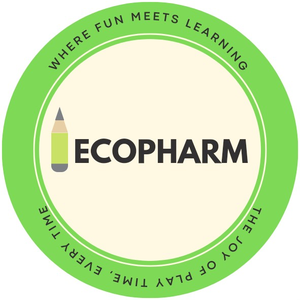Search
1/9
RM17.50
[100pcs + Activity Cards] Math Linking Cubes Number Blocks Building Block
Sold by Where Fun Meets Learning
5(6)
23 sold
Select options
Select
Shipping
From RM4.90
Est. delivery by May 18 - May 21
Specifications
Customer reviews (6)
u**2
Item: 100 Cubes+ Cards
Ease of use:Excellent
April 12, 2025
b**n
Item: 100 Cubes+ Cards
Great!
2d ago

B**t ** ♥**
Item: 100 Cubes+ Cards
Good
March 30, 2025

b**
Item: 100 Cubes
👍🏻
December 2, 2024
N**n
Item: 100 Cubes
Barang dh sampai, tq seller...anak suka..dh lama die ckp die nk block mcm nie...tq... mcm2 die dh Bina ngn block...tq so much...terbaik... wrapping dgn bubble wrap...xde rosak pun...tq seller
![Product Review of [100pcs + Activity Cards] Math Linking Cubes Number Blocks Building Block from N**n 0](https://p16-oec-sg.ibyteimg.com/tos-alisg-i-aphluv4xwc-sg/3cf398e078a246a1a33354b93729dc58~tplv-aphluv4xwc-resize-jpeg:350:350.jpeg?dr=15584&t=555f072d&ps=933b5bde&shp=6ce186a1&shcp=e1be8f53&idc=my&from=1826719393)
![Product Review of [100pcs + Activity Cards] Math Linking Cubes Number Blocks Building Block from N**n 1](https://p16-oec-sg.ibyteimg.com/tos-alisg-i-aphluv4xwc-sg/eb9d8e76bbef443998088615c17a9815~tplv-aphluv4xwc-resize-jpeg:350:350.jpeg?dr=15584&t=555f072d&ps=933b5bde&shp=6ce186a1&shcp=e1be8f53&idc=my&from=1826719393)
![Product Review of [100pcs + Activity Cards] Math Linking Cubes Number Blocks Building Block from N**n 2](https://p16-oec-sg.ibyteimg.com/tos-alisg-i-aphluv4xwc-sg/be6ab0bda5b64a18bcadb89c5c7b0eba~tplv-aphluv4xwc-resize-jpeg:350:350.jpeg?dr=15584&t=555f072d&ps=933b5bde&shp=6ce186a1&shcp=e1be8f53&idc=my&from=1826719393)
![Product Review of [100pcs + Activity Cards] Math Linking Cubes Number Blocks Building Block from N**n 3](https://p16-oec-sg.ibyteimg.com/tos-alisg-i-aphluv4xwc-sg/39741eae50de46dfbde87d2f7bfe5391~tplv-aphluv4xwc-resize-jpeg:350:350.jpeg?dr=15584&t=555f072d&ps=933b5bde&shp=6ce186a1&shcp=e1be8f53&idc=my&from=1826719393)
More
3w ago

j**u
Item: 100 Cubes
Warna menarik
1w ago

Where Fun Meets Learning
81 items
Shop performance
Better than 94% of other shops
Ships within 2 days
94%
Responds within 24 hours
96%
About this product
Suitable Age3-4 tahun
BahanABS,Plastik
Product description
Math linking cubes, also known as number blocks, are versatile educational tools used to teach various mathematical concepts to kids or students. These cubes typically come in a variety of colors and can interlock with each other to form larger structures. Along with the cubes themselves, activity cards are often included to provide guided learning experiences and exercises. Here's how they can be used:
1. **Counting and Number Recognition**: Young learners can use the cubes to practice counting and recognizing numbers. They can build towers with a specific number of cubes as indicated on the activity cards, helping them associate the visual representation of the number with its quantity.
2. **Basic Operations**: Addition and subtraction can be introduced using the cubes. For addition, students can combine two sets of cubes to find the total, while for subtraction, they can remove cubes to find the difference. Activity cards can present equations for students to solve using the cubes.
3. **Patterns and Sequences**: The cubes can be arranged to create different patterns and sequences, helping students understand mathematical concepts such as repetition, symmetry, and geometric sequences. Activity cards can provide pattern templates for students to recreate or extend.
4. **Measurement and Geometry**: Linking cubes can be used for hands-on exploration of measurement and geometry concepts. Students can compare lengths of different structures built with the cubes, explore the concept of volume by building 3D shapes, or create symmetrical designs.
5. **Problem Solving**: Activity cards can present students with math-related problems and puzzles to solve using the cubes. These can range from simple tasks like finding all the ways to make a specific number using a given set of cubes to more complex word problems involving multiple steps.
6. **Group Activities and Games**: Linking cubes can facilitate collaborative learning and engagement through group activities and games. Students can work together to solve challenges presented on activity cards or participate in competitive games that involve building structures or solving math problems against the clock.
Overall, the combination of math linking cubes and activity cards provides a hands-on, interactive approach to learning mathematics, making abstract concepts more concrete and engaging for students of all ages and abilities.
![Product Introduction of [100pcs + Activity Cards] Math Linking Cubes Number Blocks Building Block 16](https://p16-oec-sg.ibyteimg.com/tos-alisg-i-aphluv4xwc-sg/877b37196f464322b97dd88cfe33ed75~tplv-aphluv4xwc-resize-jpeg:800:800.jpeg?dr=15584&t=555f072d&ps=933b5bde&shp=6ce186a1&shcp=e1be8f53&idc=my&from=1826719393)
![Product Introduction of [100pcs + Activity Cards] Math Linking Cubes Number Blocks Building Block 17](https://p16-oec-sg.ibyteimg.com/tos-alisg-i-aphluv4xwc-sg/f99ef92def9e412292b2c4f3b17e9223~tplv-aphluv4xwc-resize-jpeg:800:800.jpeg?dr=15584&t=555f072d&ps=933b5bde&shp=6ce186a1&shcp=e1be8f53&idc=my&from=1826719393)
![Product Introduction of [100pcs + Activity Cards] Math Linking Cubes Number Blocks Building Block 18](https://p16-oec-sg.ibyteimg.com/tos-alisg-i-aphluv4xwc-sg/7c1d1334afac485a88156b57f053692f~tplv-aphluv4xwc-resize-jpeg:800:800.jpeg?dr=15584&t=555f072d&ps=933b5bde&shp=6ce186a1&shcp=e1be8f53&idc=my&from=1826719393)
Videos for this product
Explore more from Where Fun Meets Learning
![[10pcs]A4 File Folder Document Bag Zip Zipper Bags Waterproof Office School Stationery Fail A4]() 4.927351soldRM9.89RM13.90
4.927351soldRM9.89RM13.90![Superdots Dot markers Kids Art Painting Do a Dot]()
![Set Penanda Akrilik untuk Seni Lukisan Anak-anak Acrylic Markers Stationery]()

4.9
3347sold
RM23.70
RM50.00

4.9
3533sold
RM10.39
RM50.00
No more products
Open TikTok
![[100pcs + Activity Cards] Math Linking Cubes Number Blocks Building Block 0](https://p16-oec-sg.ibyteimg.com/tos-alisg-i-aphluv4xwc-sg/ffc8bae491c54ace8a0d49f1238877b9~tplv-aphluv4xwc-resize-jpeg:800:800.jpeg?dr=15584&t=555f072d&ps=933b5bde&shp=6ce186a1&shcp=e1be8f53&idc=my&from=1826719393)
![[100pcs + Activity Cards] Math Linking Cubes Number Blocks Building Block 1](https://p16-oec-sg.ibyteimg.com/tos-alisg-i-aphluv4xwc-sg/ee08a1a6d480453aab755c96e8dd2f13~tplv-aphluv4xwc-resize-jpeg:800:800.jpeg?dr=15584&t=555f072d&ps=933b5bde&shp=6ce186a1&shcp=e1be8f53&idc=my&from=1826719393)
![[100pcs + Activity Cards] Math Linking Cubes Number Blocks Building Block 2](https://p16-oec-sg.ibyteimg.com/tos-alisg-i-aphluv4xwc-sg/a117e88c6d01428196615d1ca36762ab~tplv-aphluv4xwc-resize-jpeg:800:800.jpeg?dr=15584&t=555f072d&ps=933b5bde&shp=6ce186a1&shcp=e1be8f53&idc=my&from=1826719393)
![[100pcs + Activity Cards] Math Linking Cubes Number Blocks Building Block 3](https://p16-oec-sg.ibyteimg.com/tos-alisg-i-aphluv4xwc-sg/b9bb848324304fd9b4501fb8ecc4c243~tplv-aphluv4xwc-resize-jpeg:800:800.jpeg?dr=15584&t=555f072d&ps=933b5bde&shp=6ce186a1&shcp=e1be8f53&idc=my&from=1826719393)
![[100pcs + Activity Cards] Math Linking Cubes Number Blocks Building Block 4](https://p16-oec-sg.ibyteimg.com/tos-alisg-i-aphluv4xwc-sg/01edce09ebb24437820992619b8ab548~tplv-aphluv4xwc-resize-jpeg:800:800.jpeg?dr=15584&t=555f072d&ps=933b5bde&shp=6ce186a1&shcp=e1be8f53&idc=my&from=1826719393)
![[100pcs + Activity Cards] Math Linking Cubes Number Blocks Building Block 5](https://p16-oec-sg.ibyteimg.com/tos-alisg-i-aphluv4xwc-sg/c35813dabb2049ab941839c59ab12bd8~tplv-aphluv4xwc-resize-jpeg:800:800.jpeg?dr=15584&t=555f072d&ps=933b5bde&shp=6ce186a1&shcp=e1be8f53&idc=my&from=1826719393)
![[100pcs + Activity Cards] Math Linking Cubes Number Blocks Building Block 6](https://p16-oec-sg.ibyteimg.com/tos-alisg-i-aphluv4xwc-sg/4fe23cfcc2024b1dbc3e712c81787cf3~tplv-aphluv4xwc-resize-jpeg:800:800.jpeg?dr=15584&t=555f072d&ps=933b5bde&shp=6ce186a1&shcp=e1be8f53&idc=my&from=1826719393)
![[100pcs + Activity Cards] Math Linking Cubes Number Blocks Building Block 7](https://p16-oec-sg.ibyteimg.com/tos-alisg-i-aphluv4xwc-sg/35645319ed7949038d49f9c4f25c81d1~tplv-aphluv4xwc-resize-jpeg:800:800.jpeg?dr=15584&t=555f072d&ps=933b5bde&shp=6ce186a1&shcp=e1be8f53&idc=my&from=1826719393)
![[100pcs + Activity Cards] Math Linking Cubes Number Blocks Building Block 8](https://p16-oec-sg.ibyteimg.com/tos-alisg-i-aphluv4xwc-sg/cf13222596ac436a80859741501c8ea4~tplv-aphluv4xwc-resize-jpeg:800:800.jpeg?dr=15584&t=555f072d&ps=933b5bde&shp=6ce186a1&shcp=e1be8f53&idc=my&from=1826719393)
![[10pcs]A4 File Folder Document Bag Zip Zipper Bags Waterproof Office School Stationery Fail A4](https://p16-oec-sg.ibyteimg.com/tos-alisg-i-aphluv4xwc-sg/ff99f88fcd074162ad54460e91af828f~tplv-aphluv4xwc-crop-webp:1000:1000.webp?dr=15592&from=2378011839&idc=my&ps=933b5bde&shcp=e1be8f53&shp=8dbd94bf&t=555f072d)


![[40pcs/set] Montessori Toy Button Lacing Geometry Shapes Threading Plastic Children Educational](https://p16-oec-va.ibyteimg.com/tos-maliva-i-o3syd03w52-us/82c01a4d2934496ebf2dc80d4341df15~tplv-o3syd03w52-crop-webp:1200:1200.webp?dr=15592&from=2378011839&idc=my&ps=933b5bde&shcp=e1be8f53&shp=8dbd94bf&t=555f072d)

![[30 Beads/set] Lacing Beads for Kid/ Stringing Bead Toy Fine Motor Skill](https://p16-oec-sg.ibyteimg.com/tos-alisg-i-aphluv4xwc-sg/d1e06501a93541719067fd8bbde17591~tplv-aphluv4xwc-crop-webp:1800:1800.webp?dr=15592&from=2378011839&idc=my&ps=933b5bde&shcp=e1be8f53&shp=8dbd94bf&t=555f072d)
![[5 puzzles/box] Mini Puzzle Cute Sanrio Puzzle Gift Toy Kid Kuromi Astronaut](https://p16-oec-va.ibyteimg.com/tos-maliva-i-o3syd03w52-us/e9d50ebd4c2a4a2b9f22958d982df2e3~tplv-o3syd03w52-crop-webp:800:800.webp?dr=15592&from=2378011839&idc=my&ps=933b5bde&shcp=e1be8f53&shp=8dbd94bf&t=555f072d)















![[COD] New Rotating Rainbow Tower Baby Stacking Puzzle Toys Safety and Environmental Protection Colored Children's Toys](https://p16-oec-sg.ibyteimg.com/tos-alisg-i-aphluv4xwc-sg/bd8d4ac0c87343efa58a76ce184fd76b~tplv-aphluv4xwc-crop-webp:1000:1000.webp?dr=15592&from=2378011839&idc=my&ps=933b5bde&shcp=e1be8f53&shp=8dbd94bf&t=555f072d)


![[100 Design] Cute Mini Nano Blocks Cartoon Series Present Gift Decoration Deco Building Block Toys](https://p16-oec-sg.ibyteimg.com/tos-alisg-i-aphluv4xwc-sg/ac4cf9b448184b969a2990ff9bdbc625~tplv-aphluv4xwc-crop-webp:1000:1000.webp?dr=15592&from=2378011839&idc=my&ps=933b5bde&shcp=e1be8f53&shp=8dbd94bf&t=555f072d)




![[CLEARANCE STOCK] Damo Egg Cute Cartoon Series Nano Block Mini Block Gift Decoration Building Brick Toy Boy Girl](https://p16-oec-sg.ibyteimg.com/tos-alisg-i-aphluv4xwc-sg/e62d115b6f2740a4bca2ab69d7c48422~tplv-aphluv4xwc-crop-webp:800:800.webp?dr=15592&from=2378011839&idc=my&ps=933b5bde&shcp=e1be8f53&shp=8dbd94bf&t=555f072d)

